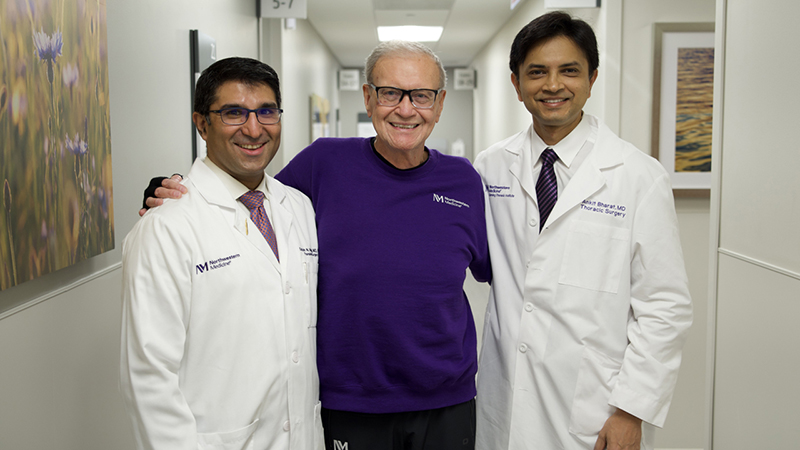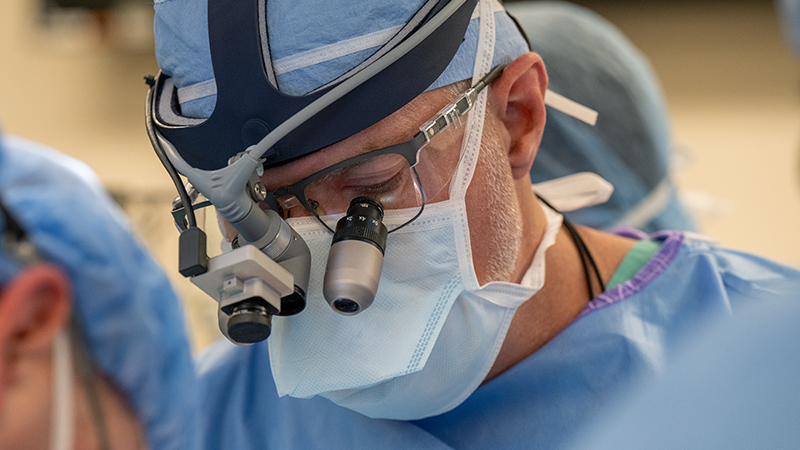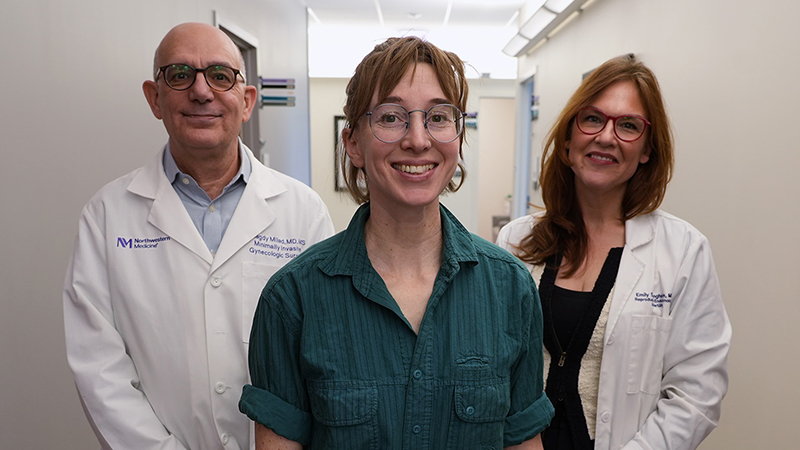What It’s Like to Live With Aphasia
Language Disorder After a Stroke
Updated January 2024
“Hi, how are you?”
It’s a phrase you might take for granted. But for people living with a language disorder known as aphasia, it’s a milestone that underscores their ability to start and hold a conversation with others.
Program Lead Clinician and Speech-Language Pathologist Michelle Armour, MS, CCC-SLP, describes how the Northwestern Medicine Aphasia Center at Marianjoy Rehabilitation Hospital helps people work toward goals tailored to their needs — in particular, communicating with others.
What Is Aphasia?
Aphasia is a language disorder that hinders your ability to communicate with others. It is often caused by stroke or a head injury, and it can impact your ability to talk, read, write or understand words. “Every stroke is different and affects people in a number of different ways,” says Armour. “It never looks the same from one person to another. When it comes to aphasia, each person may experience different challenges related to their communication.”
We offer resources and a supportive community to help.— Michelle Armour, MS, CCC-SLP
The severity of aphasia varies greatly. For example, saying, "Hi, how are you?" is an accomplishment for some people. Yet even when challenges are overcome, difficulty finding words can be something that persists for the remainder of a person's life. Fortunately, trained professionals and helpful resources can help them thrive and meet their goals.
Aphasia can cause challenges that affect your social life and relationships. The Aphasia Center offers a supportive group environment where individuals can work together to become more comfortable communicating after a stroke or brain injury.
The Aphasia Center offers all-inclusive programs focused on certain activities. The activities provide a point of connection and include a book club, as well as groups focused on technology, writing, music, math, games and conversation. Perhaps most important is the human connection through language.
Meet two individuals, each with their own unique challenges and goals, and learn how the center has played a role in helping them find the tools they need to reach their goals.
Importance of Connection
When it comes to making connections, Ed Leman works to stay connected and improve his ability to communicate with his family.
Ed was the superintendent for West Chicago Elementary School District 33 in West Chicago, Illinois, when he had a stroke at the age of 57 in 2012. An ambulance took him to Northwestern Medicine Delnor Hospital, and then he was transferred to Northwestern Medicine Central DuPage Hospital where he underwent a 14-hour surgery to remove clots from an ischemic stroke. After being stabilized, he was transferred to a rehabilitation hospital where he spent about six weeks learning to walk again.
When he returned home, he began outpatient therapy at Northwestern Medicine Marianjoy Rehabilitation Hospital. After a few years, Ed started attending the Aphasia Center. In the beginning, his goals were to regain his speech because he could not make any sounds. He has now progressed with speaking to communicate more functionally.
In Ed’s classes at the Aphasia Center at Marianjoy, his teachers have helped him use his phone to text family and friends. The messaging app on his smartphone offers suggestions for words and their spellings, which helps when he texts. Ed is able to communicate daily with loved ones, and he shares news and fun things with them, which builds valuable support.
“We are so grateful for the Aphasia Center at Marianjoy and how it helps stroke survivors live their daily lives better. You cannot make someone recover faster than they can, and Ed has been recovering for many years,” says his wife, Jenny.
Relearning and Moving On
Five years after his stroke, Patrick Gutzmer continues to work on improving his abilities through hard work and the support of family and friends.
At 45, Patrick, from Geneva, Illinois, was the vice president of a bank. He distinctly recalls the day he had an ischemic stroke. “My eyesight was blurry and got worse as time passed. I knew something was wrong, and I went to the hospital,” he says. It was not until reaching the hospital, when clinicians told him they were calling a stroke code, that he realized just how serious his situation was.
During his recovery, Patrick received outpatient speech, occupational and physical therapy. However, he felt like he wasn’t at his fullest potential, and as a result, he sought care at the Aphasia Center. “I had to relearn how to write, read and do math,” he says. “Even the alphabet.” His main goal was to get as close as possible to his pre-stroke abilities, including getting back to work.
When Patrick joined the aphasia group at the center, he was able to work on aspects of life that were once part of his daily routine — counting money, writing sentences and working with technology. The group inspired him every day. “It’s good to have someone going through the same thing right there beside you,” he says.
Patrick finished his time at the Aphasia Center and used his relearned skills to earn a Master of Business Administration degree and return to work full-time.
“You have to have faith and work at it,” says Patrick. “Right after my stroke, it was very sad and depressing in the beginning. But it just takes time. You have to force yourself to do it no matter how bleak things appear.”
The Bottom Line: Help Is Available
Ultimately, Armour encourages those who have aphasia to never give up. A supportive community and tailored programs can help people with aphasia achieve their goals while connecting with others with similar experiences.
“It’s never too late to enroll in a group program,” Armour stresses. “A person can continue recovering years after a stroke. They just need the correct outlets and ways to practice.”





